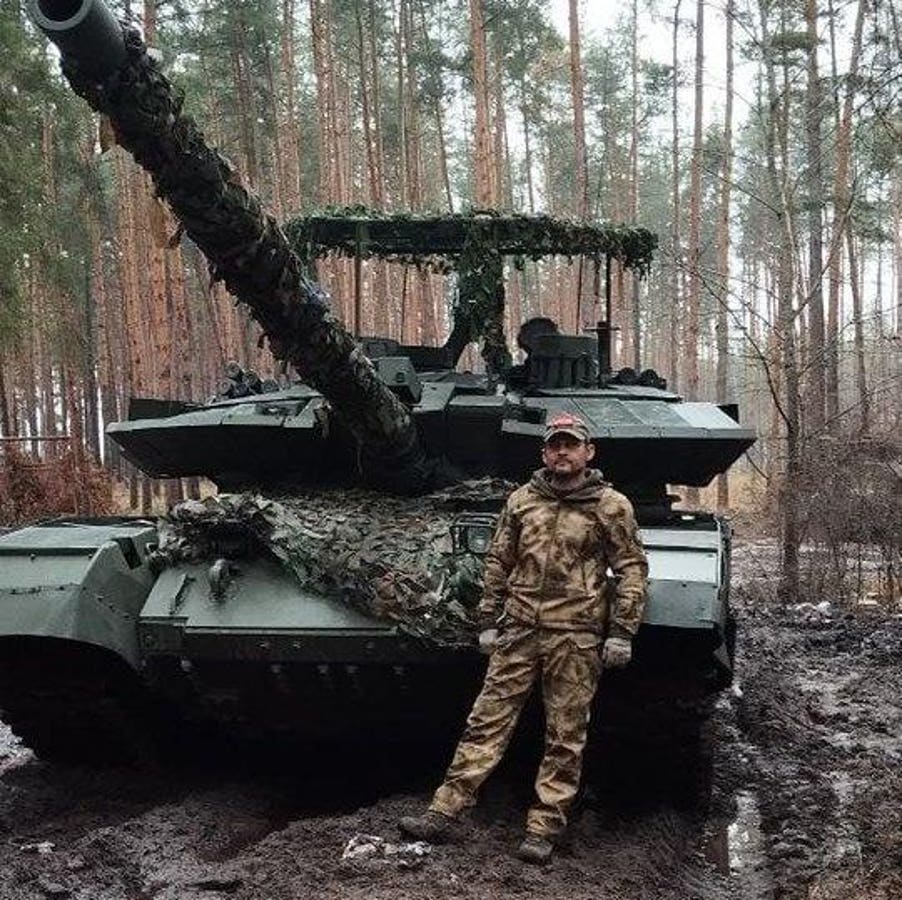Desperate to replace the scores of tanks it loses every month in its wider war on Ukraine, and equally desperate to give the replacement tanks a fighting chance of surviving their first encounter with Ukrainian forces, Russia is pulling 60-year-old T-62 tanks out of long-term storage—and piling extra armor onto their steel hulls and turrets.
The problem, for the four-person crews of these aging tanks, is that the Kremlin apparently isn’t uprating the T-62s’ 620-horsepower engines. A full suite of add-on explosive reactive armor weighs as much as three tons. All that extra weight makes a sluggish T-62 even more sluggish.
A photo that circulated online on Sunday depicts a heavily-modified T-62MV—a 1980s upgrade of the 1960s tank that all but disappeared from Russian service after 2008—wearing the same explosive-reactive armor that protects the more modern T-90. The Kremlin began reactivating old T-62s last year as its losses of modern tanks exceeded 1,000 vehicles.
With the ERA plus a modern-ish 1PN96MT-02 gunner’s sight for its 100-millimeter main gun, this T-62 might be the most heavily upgraded T-62. Call it a T-62MV Obr. 2023.
The problem, of course, is that the T-62MV’s diesel engine produces just 620 horsepower. Considering that a T-62MV with three tons of ERA might weigh 45 tons or more, its power-to-weight ratio is less than 14 horsepower per ton. A T-90M produces 26 horsepower per ton; one of Ukraine’s American-made M-1A1s produces 22 horsepower per ton.
A well-fitted layer of explosive reactive armor, which explodes outward when struck in order to deflect an incoming blast, in essence doubles a tank’s protection from certain kinds of high-explosive rounds.
But in the case of the underpowered T-62MV Obr. 2023, that extra protection comes at the cost of mobility. The T-62 never was a sprightly tank. Now it’s even less nimble.
This matters. Both the Russian and Ukrainian armed forces frequently deploy tanks for small-scale hit-and-run raids. Examples abound of small teams of tanks from both sides speeding up to enemy positions, firing a few rounds then speeding away as enemy missiles and artillery dial in.
Western-made tanks such as Ukraine’s M-1s and ex-German Leopard 2s have an advantage in these fast raids because they have robust transmissions with fast reverse speeds; they don’t have to spend tens of seconds turning around in order to escape a kill zone at high speed.
Most Soviet-style tanks by contrast have extremely slow reverse gears—and this can get these tanks’ crews killed in a raid where every second matters. A T-62 without three tons of ERA might reverse at five miles per hour, compared to an M-1’s 25-mile-per-hour top speed in reverse.
With extra ERA, a T-62MV Obr. 2023 will be even slower.
Read the full article here





